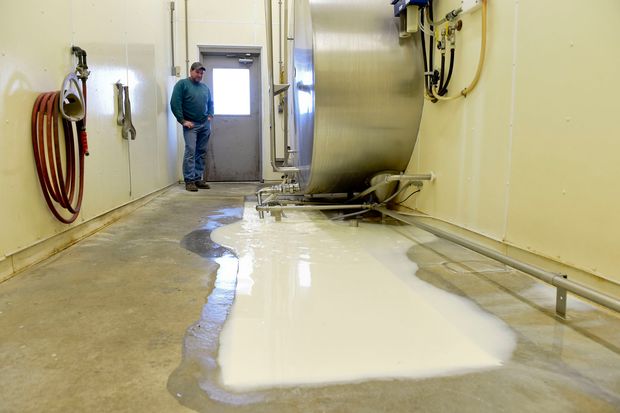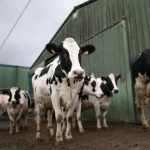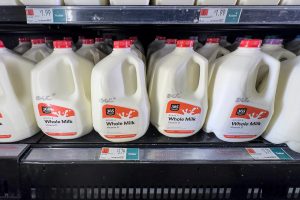
At El-Vi Farms in Newark, milk — is money. Owning partner Kim Skellie says after a few down years, 2019 was a decent year.
“We were kind of planning on 2020 being a pretty good year,” said Skellie. “And then it really did an about-face here in the last few weeks.“
In a barn on Pelis Road in Newark, near the Ontario County line, 1,450 cows are milked three times a day — part of an overall herd of 3,700. Before the Coronavirus outbreak, the farm made $18.50 per hundred pounds of milk produced.
Those days, for now — are gone. Skellie figures the April milk check will be about $3 per hundredweight less. Projected payments for the summer months could drop by $5, he says.
For a farm which shipped two tanker trucks of milk per day to a co-op, that’s a significant amount of money lost. With milk-consuming schools and restaurants closed because of the coronavirus-related pause, supply right now far exceeds demand.
“We have about 10 percent too much milk on the market,” he said. “So they’re asking us to cut back 10 to 15 percent.”
Though he hasn’t had to do it yet, Skellie knows some local farmers who’ve had to dump their milk.
“You’re dumping money and that’s kind of a mental thing too,” he said. “You work hard to produce a good product, and then it’s going down the drain. You know there’s hungry people out there who want it or could use it, and you can’t necessarily get it there because you don’t control all the aspects in the supply chain.”
Skellie fears dairy farmers that already struggled before coronavirus might not make it, but how many will fail remains to be seen.
Farming — at times — takes a leap of faith. Things like weather and markets are out of their control. Skellie says government payments may help soften the blow, but he still expects to take a financial hit.
Whatever the coming months may bring — it won’t be easy.
“For us, we can’t turn off the cows in a day or two and we have to produce less milk,” he said. “So they keep producing, and we’ve got to keep the people here doing the job, and healthy.”

























